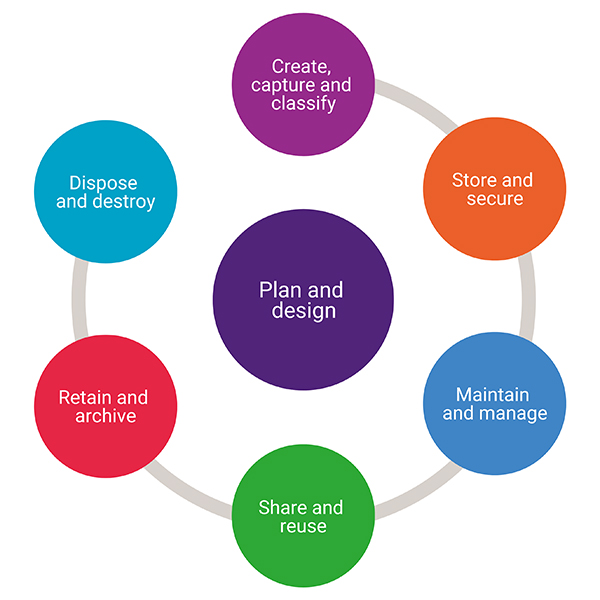The information lifecycle
What is information lifecycle management?
Information should be managed consistently from creation to final disposal. The lifecycle involves people, processes and technology and drives improved control over information as it moves through the various lifecycle stages described below.
Information lifecycle phases at UQ
The information lifecycle at UQ includes the following phases:
Create, capture and classify
Information may be obtained through several means including manual data entry and automatic capture via devices or systems. At the time information is acquired, key metadata should be recorded, including the information security classification.Find out which Information Security Classification you should apply
Store and secure
Information must be stored appropriately, with consideration given to security and access management.
Manage and maintain
Information management is an active process. Information should be managed to maintain its integrity, quality and usability.
Share and reuse
Sharing and re-use of information requires oversight to ensure it is ethical and compliant with UQ policies and legislative requirements. Information should be discoverable to streamline sharing and re-use for appropriate activities.
Retain and archive
Information should be retained while required and archived in line with any relevant record retention periods.
Dispose or destroy
Dispose or destroy: Information should be destroyed in an appropriate manner at the end of its useful life, ensuring that records are destroyed (or transferred to the appropriate owner) in line with UQ’s Records Management Procedure.
Note that “Plan and Design” sits in the centre of the Information Lifecycle, as information management should be carefully planned, with activities designed to meet University needs and compliance requirements throughout the lifecycle.

Information lifecycle management at UQ is coordinated across the University by the Information Technology Services (ITS) Division.
